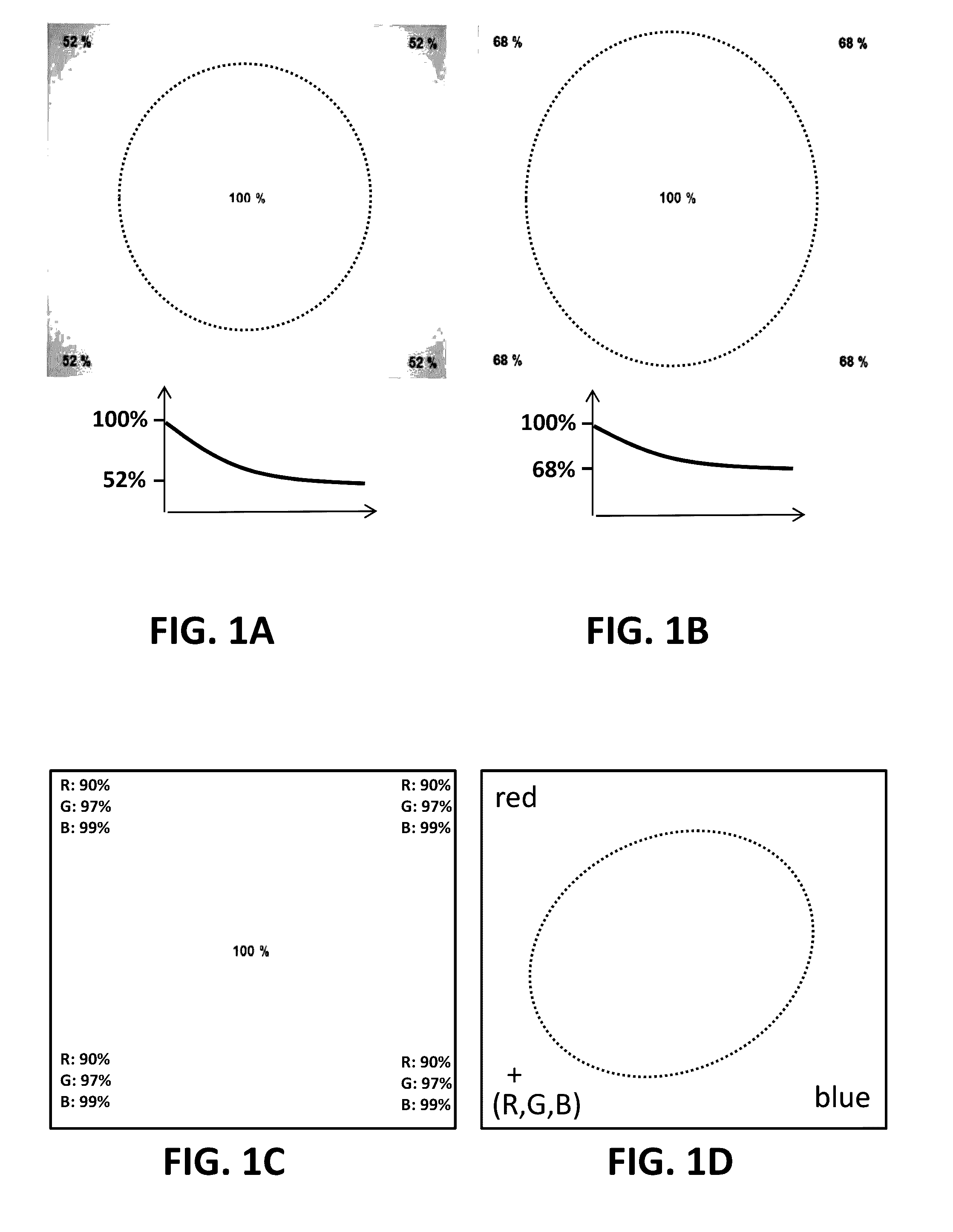Image sensor with shading detection
a technology of image sensor and shading detection, which is applied in the field of image sensor, can solve the problems of lens vignetting cannot be avoided, the output signal of the pixels is “shaded” and the problem becomes even more complicated
- Summary
- Abstract
- Description
- Claims
- Application Information
AI Technical Summary
Benefits of technology
Problems solved by technology
Method used
Image
Examples
first embodiment
[0098]FIG. 5 shows a first embodiment of an image sensor 300 according to aspects of the present invention. The image sensor 300 comprises a plurality of image pixels 320 and a plurality of shading detection pixels 330. Each image pixel 320 and shading pixel 330 and (optional) focus detection pixel 340 (if present) has a photoelectric conversion element such as e.g. a photodiode for converting impinging radiation, e.g. light energy, into electrical energy, but only the image pixels are adapted, e.g. optimized for capturing image data. An aspect of the present invention is that the shading detection pixels of all embodiments of the present invention are located in the same area, e.g. rectangular area, as defined by the (normal) image pixels 320. The shading pixels 330 effectively take the place of some of the image pixels 320, in contrast to the prior art image sensor 100 (of FIG. 2), where the shading pixels 130 are located outside of the area occupied by the (normal) image pixels 1...
second embodiment
[0113]FIG. 8 shows a second embodiment of an image sensor 400 according to aspects of the present invention. The image sensor 400 comprises a plurality of image pixels 420 and a plurality of shading detection pixels 430, the latter being organized in blocks of 1×9 pixels (i.e. arrays of 1 row and 9 consecutive columns). The shading pixels 430 are located in the same rectangular area as the area defined by the image pixels 420, and they effectively replace some of the image pixels.
[0114]The main difference between this embodiment and that of FIG. 5 is that the blocks 404 to 409 of shading pixels are arranged horizontally as 1×9 arrays, instead of vertically as 9×1 arrays. The image sensor 400 may optionally comprise focus detection pixels 440, which in the embodiment illustrated are arranged also horizontally, although that is not absolutely required. All the advantages described for the first embodiment are also applicable here. Furthermore, there may be an additional advantage in t...
third embodiment
[0124]FIG. 12 shows a third embodiment of an image sensor 500 according to aspects of the present invention. The image sensor 500 comprises a plurality of image pixels 520 and a plurality of shading detection pixels 530. The shading detection pixels are organized in blocks of 5×5 pixels comprising sixteen image pixels 520 and nine shading pixels 530. Also in this embodiment, the shading pixels 530 are located in the same rectangular area as the image pixels 520, (i.e. the area defined by the image pixels), and the shading pixels take the place of some of the image pixels.
[0125]The main difference between this embodiment and that of FIG. 5 is that the blocks 504 to 507 of shading pixels are arranged as square blocks, instead of partial columns. Optionally, the image sensor 500 of FIG. 12 further comprises focus detection pixels 540, which are arranged in the example of FIG. 12 in horizontal and vertical zones 501, 502, 503, but any other arrangement of the focus detection pixels may ...
PUM
 Login to View More
Login to View More Abstract
Description
Claims
Application Information
 Login to View More
Login to View More - R&D
- Intellectual Property
- Life Sciences
- Materials
- Tech Scout
- Unparalleled Data Quality
- Higher Quality Content
- 60% Fewer Hallucinations
Browse by: Latest US Patents, China's latest patents, Technical Efficacy Thesaurus, Application Domain, Technology Topic, Popular Technical Reports.
© 2025 PatSnap. All rights reserved.Legal|Privacy policy|Modern Slavery Act Transparency Statement|Sitemap|About US| Contact US: help@patsnap.com



